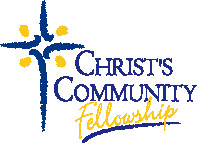|
James' Articles  Monday, November 26 2018
This is Caesarea Philippi After Dan, we will travel about 4 miles to the city of Caesarea Philippi. It is located at the southwest base of Mount Hermon at approximately 1150 ft above sea level, at the headwaters for the Jordan River. Being almost 25 miles to the north of the Sea of Galilee, the location was strategic in defending the fertile plains to the west. Before the Hellenistic Period, the name of the area is relatively unknown. However, a shrine built there to the idols Baal-gad or Baal-hermon (Joshua 11:17ff; Judges 3:3; 1 Chronicles 5:23) may have been the actual cave site discussed next. A cave of individual note is located there where a spring emerges and particularly floods during the spring rains. Greeks who came to stay there dedicated the existing shrine to their idol “Pan,” and “the Nymphs.” During the reign of Antiochus the Great (ca. 200 BC), the name of the city was refined to Panion (or Paneion). The title remained for the region and would etymologically change to “Paneas.” As a side note of particular value for cultural understanding, Pan (meaning “all” in Greek) was the idolatrous god of the wild, untamed mountains, shepherds and flocks, simple music, sexuality, and an association with the Nymphs. He was half goat and half man, whose appearance frightened more than attracted others. However, his music on a set of handmade pipes constructed of reeds cut down while pursuing a nymph named Syrinx was seductive. The sexual focus on Pan’s fiction developed into sordid stories of rape, homosexuality, and bestiality. Even the word “nymph (+mania)” is used in psychological terms today in reference to those with sexual addictions. The story continues that Pan loved naps even more than his nymphs and disturbing him was at one’s peril. Once angered, Pan could let out a shrieking voice so terrifying, that all who heard it would “panic,” hence, the origin of the word. Legend stated that the overwhelming feeling of fright one had when lost in the mountain wilderness was the presence of Pan. He is the only “god” in Greek mythology to have died. However, the cave carried an even extended myth to the locals there. They believed that the opening of the cave (where the shrine was built) served as a gateway to “Hades.” In this underworld, the fertility gods (such as Pan) would sleep throughout the winter. Every year when the spring would come flooding out of the cave, they believed the fertility gods were awakening and coming forth. Horrible acts of worship occurred around this cave and city. Prostitution and bestiality were openly practiced as well as ritual human sacrifice. The cave was literally seen as the entrance and exit to “hell.” Understanding this gives a more comprehensive context to the understanding of Matthew 16:13ff. Of all the places for a Jewish Rabbi to bring His students, Caesarea Philippi had to be of some question in the minds of the disciples. Not only would it be the equivalent of holding a midnight Bible study in Patpong, Bangkok (red light district), regardless of one’s belief in idols or not, it would be next to the notorious opening to the underworld. Here Christ stands in Caesarea Philippi with His disciples and asks them, “Who do people say that I am?” Amid a hub of hedonistic idolatry, the question is answered by Peter in almost a purely Jewish fashion (“John the Baptist, Elijah, Jeremiah”). It would be akin to the typical “church answer” to open questions. But undoubtedly, the eerie location had to be on their minds. Then Jesus asks Peter the same question, except regarding him personally. “Who do you say that I am?” Then Peter gives his great confession of faith. “You are the Christ, the Son of the living God.” But what Jesus speaks next is phenomenally connected to the geographical context. Jesus calls him “Peter (masculine - Petros),” which essentially means “rocky.” Then Christ says it is upon this “rock (feminine – petras),” that He will build His church, and the gates of “Hades” will not overpower it. Thus, while standing in front of stone shrines to idols, Jesus proclaims His church to be built on the “rock” of the confession of true faith. Moreover, before this legendary doorway for the underworld and the gods, He states that even the gates of hell will not prevail against His church. Not only would this crush imaginary fears, but true fears of evil as well. Then adding to the wonderful news, Jesus tells them that He will hand them the “keys of the kingdom of heaven.” So, the false gate of hell is vanquished with no power and the entrance to the kingdom of heaven is at their hand. Going back in time before the coming of Christ, Herod the Great (20 BC) was given the district of Paneas by Augustus. In response, Herod built a temple constructed of white marble to honor the Emperor. Herod dies shortly thereafter (4 BC), and Philip inherits the area as a part of his tetrarchy. He reconstructs the city and renames it “Caesarea,” in honor of Augustus. Philip used his name in conjunction with Caesarea, to distinguish it separately from the existing city of Caesarea. Agrippa II (ca. 53 AD) increased the size of the city and changed the name to Neronias, to honor Nero. The name did not stick, however. Josephus records that during the First Jewish War, Vespasian and his legions rested in the city. After the fall of the Temple in Jerusalem, Emperor Titus sends some of the captives to Caesarea Philippi to have them thrown to wild beasts. The name of the city fell back to Paneas in later Roman and Byzantine periods. After the invasion of the Muslims, they adopted the name into the Arabic form, “Banias.”
|



